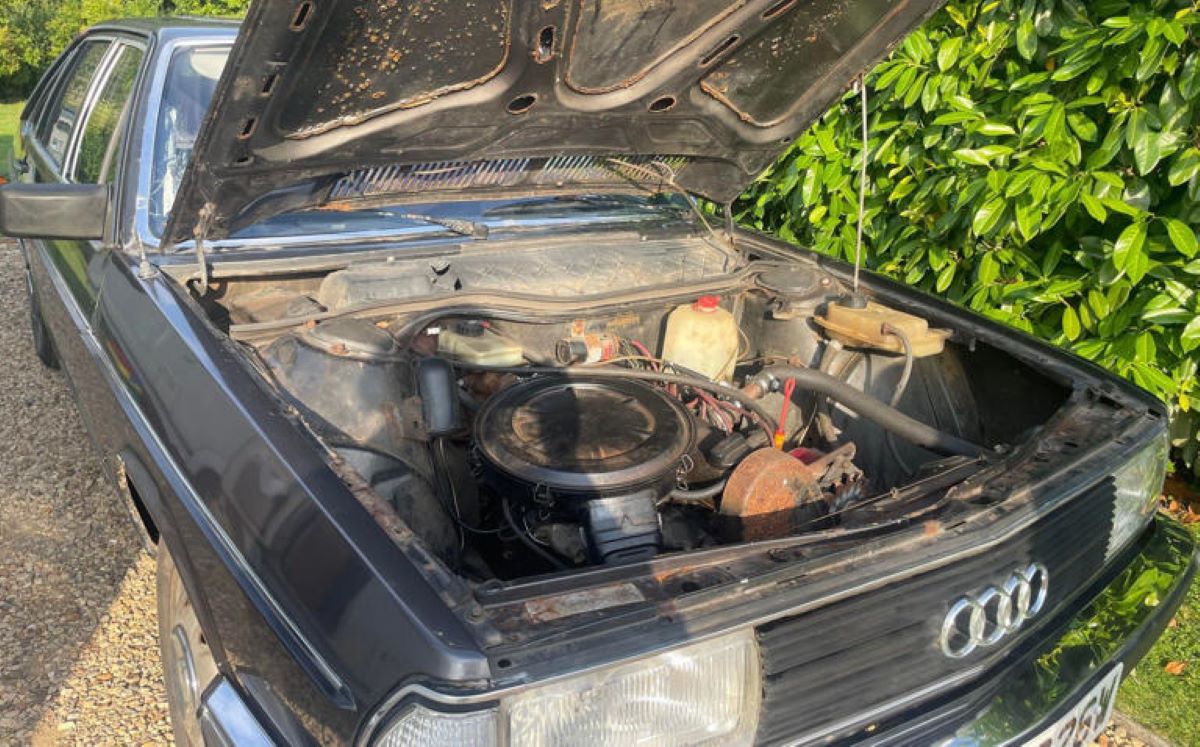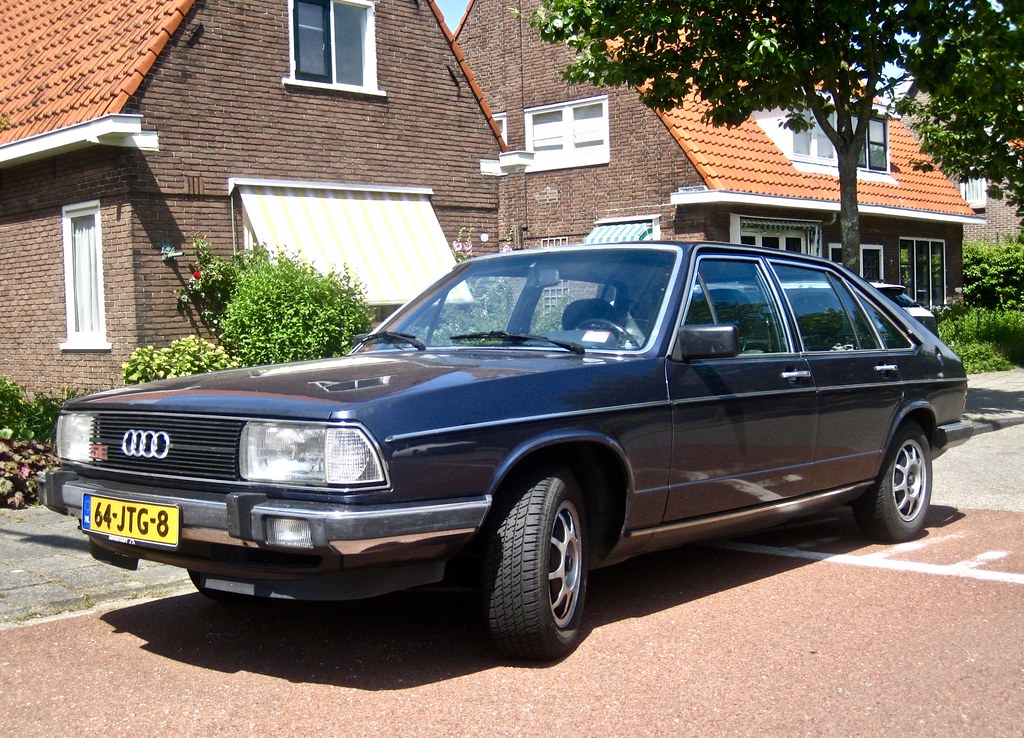If the 1968 C1-series 100 established Audi as a serious competitor to brands like Rover and Mercedes-Benz, the 1976-82 C2 series solidified the German automaker’s foothold in the market.
Today, Sharon Hall’s 100L Avant is thought to be the only roadworthy example remaining in the UK. Audi began developing the second-generation 100 in 1972, with the saloon model debuting in August 1976.
Engine options ranged from a 1.6-liter and a 2.0-liter four-cylinder to a 2.1-liter five-cylinder—the latter marking Audi’s first use of this configuration, which the company claimed was “better than a good four, better than a poor six.”
Audi made the unusual decision to equip the car with a five-cylinder engine, and the UK became Audi’s third-largest market for the C1 after Germany and the USA.
The distributor aimed to sell 10,000 units of the C2 annually in the UK, targeting owners of the older 100 model as well as affluent drivers inspired by characters like Jerry and Margot Leadbetter from The Good Life.
These buyers typically fell into the Rover SD1 income bracket, making the C2 potentially their first high-end “foreign” car.The Telegraph noted, “the designers had deliberately set out to create a Mercedes image.
The new car even looks like a Mercedes,” while the paper’s motoring correspondent praised the car’s “excellent cornering and roadholding.” Motor Sport commended the 1.6-liter model’s steering and handling, describing it as having an “almost total lack of front-wheel-drive traits.”
Car magazine offered an even more enthusiastic review, stating: “Audi dealers see themselves taking away Mercedes 200, BMW 520 and Volvo 244 buyers with the 100LS, but in our view they are setting their sights on the low side and not really doing credit to the design or the designers.
It is far too good a car to be lumped in with that trio of rather boring and thoroughly square saloons.”
In August 1977, Audi released the Avant model, which featured a hatchback, and UK imports began three months later, initially only in the 1.6-liter L variant.
The Avant’s tailgate was borrowed from the smaller Volkswagen Passat, and until 1975, there had even been discussions of marketing the Avant as a VW.
Autocar described the Avant as “a useful extension of the 100 range” that brought “hatchback utility” to the executive car segment, similar to Rover’s SD1.

In 1981, a 100L Avant was priced at £6,186, placing it competitively against main five-door, front-wheel-drive rivals like the £6,249 Renault 20 LS and the £7,300 Saab 900 GLS.
Buyers might also have considered the £6,179 Citroën CX Reflex if they didn’t need a hatchback or opted for the rear-wheel-drive Rover SD1 2300 at £6,759. Audi dealers could emphasize the Avant’s practicality alongside the prestige of the four-ring badge.
While the 100L wasn’t lavishly appointed—the driver’s door mirror was adjustable from inside—it was marketed as a reliable and sensible vehicle.
The grey exterior of Hall’s car fits its reserved image, while the interior resembles a snapshot of early 1980s style, reminiscent of the Habitat store’s soft furnishings section.
Designers Claus Luthe and Paolo Nestler selected the car’s color palette for its calming effect, intentionally avoiding red to eliminate any sense of “avoidable aggression.”
The third-generation 100, the C3, arrived in late 1982 after Audi had produced 988,581 units of the C2, of which only 49,652 were Avants.
Despite Audi’s emphasis on quality in its advertisements, the model was not rust-proof, and many owners treated the five-door C2 as a utilitarian vehicle, which affected its long-term survival rate.
Hall purchased her 100L Avant in 2017, describing it as “very comfortable to drive and surprisingly light to steer, considering it does not have power steering.”
She acknowledges that the 1.6-liter Avant is “not fast or powerful but it has a lovely gentle ride; you cannot help but enjoy it.”This year, Hall’s 100L Avant was displayed at the Hagerty Festival of the Unexceptional, where it drew a mix of reactions.
“We only encountered one negative comment, with someone remarking, ‘It is not worth saving,’” Hall recalls. “
The majority were far more positive comments, saying, ‘A very cool car,’ ‘Wow, that is so rare,’ and ‘Well done for saving it.’ The Audi community, in particular, was thrilled to see it up close.”
Today, the 100L Avant is an even rarer sight than its celebrated Audi Quattro contemporary.
Though it lacks the Quattro’s speed, the grey C2 serves as a impressive emblem of the executive class in the early 1980s. Above all, it bears, as Audi would say, “four rings in the front”—and that was what truly mattered.

